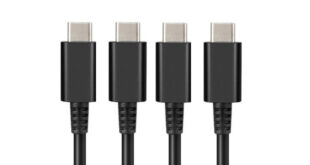Could Apple recall the iPhone 4? Will they dish out free bumpers for everyone? Is there actually no problem at all and we’ve allowed ourselves all to be brought into the hype?
Opinions will continue to differ, but Apple has at last published a full and lengthy response to the dropped-signal scandal that had dominated the iPhone 4 since its arrival last week.
The long and short of it? It’s not far off what some had already speculated. It had already been suggested that the way iPhone 4 calculates how many bars to display on its signal indicator is wrong. That’s not quite right, however. Apple reckon the way all previous iPhones had displayed it was wrong. They all dropped signal when you held them too!
So what are Apple going to do? It’s going to update the iPhone 4 so it won’t tell you when you’re dropping signal. It’s also going to update older machines so they don’t get too cocky about their reception. Better still, it’s going to change the size of the bars in the signal reception graph so they don’t look as small.
No, we’re not joking.
Here’s a close look at today’s official statement:
To start with, gripping almost any mobile phone in certain ways will reduce its reception by 1 or more bars. This is true of iPhone 4, iPhone 3GS, as well as many Droid, Nokia and RIM phones.”
This concurs with previous reports from telcoms specialists. All phones do indeed drop their signal to some degree when held. Which makes sense. Take an RF antenna and wrap a fleshy bag of salty water around it and you’d expect signal quality to drop.
The iPhone 4 has been the most successful product launch in Apple’s history. It has been judged by reviewers around the world to be the best smartphone ever, and users have told us that they love it. So we were surprised when we read reports of reception problems, and we immediately began investigating them. We have discovered the cause of this dramatic drop in bars, and it is both simple and surprising.”
The informal nature of the press release goes to great length to openly admit that Apple has found some startling results. However, all is not what it seems. Apple chooses to open with a vague admission of guilt to get readers on side. We’re in the wrong! Look, we’re admitting it! Why does it do this? Purely to set up the quite startling statement that follows
Upon investigation, we were stunned to find that the formula we use to calculate how many bars of signal strength to display is totally wrong. Our formula, in many instances, mistakenly displays 2 more bars than it should for a given signal strength. For example, we sometimes display 4 bars when we should be displaying as few as 2 bars. Users observing a drop of several bars when they grip their iPhone in a certain way are most likely in an area with very weak signal strength, but they don’t know it because we are erroneously displaying 4 or 5 bars. Their big drop in bars is because their high bars were never real in the first place.”
So, Apple doesn’t (as so many expected) claim that the iPhone 4 is in fact displaying fewer bars than it should be. It in fact claims that older iPhones have been lying and have always suffered the same signal-blocking issues that the new device currently faces. It’s the old phones that are broken, not the new ones! So what is it going to do?
To fix this, we are adopting AT&T’s recently recommended formula for calculating how many bars to display for a given signal strength. The real signal strength remains the same, but the iPhone’s bars will report it far more accurately, providing users a much better indication of the reception they will get in a given area.”
It’s going to release a patch that changes the way in which the iPhone calculates its signal bar meter. Note the lack of detail here. It would take a very brave person to bet against Apple’s new formula displaying more bars more of the time. By the same token, you can also expect patched phones to display full bars as rarely as possible. If you’re reception isn’t as good in the first place then it’s got less to lose when you hold it, right?
We are also making bars 1, 2 and 3 a bit taller so they will be easier to see.”
Yes, you read that correctly. Apple is also going to make the smaller bars to the left of the scale a bit bigger. That way, they look less small. And that will make people think their reception is better than they previously thought! Astonishing. Simply astonishing. Both in its audacity and the way in which Apple seems to think this change will somehow appease its raging critics.
We will issue a free software update within a few weeks that incorporates the corrected formula. Since this mistake has been present since the original iPhone, this software update will also be available for the iPhone 3GS and iPhone 3G. We have gone back to our labs and retested everything, and the results are the same— the iPhone 4’s wireless performance is the best we have ever shipped.”
There’s nothing worse than iPhone 3G and 3GS owners ripping it out of those who’ve forked out 600 for the latest machine, is there? Apple hates those sort of people. This’ll teach the bastards. Soon, their devices will report the same drop in signal quality as the new phones. Apple will reward the early adopters of iPhone 4 by punishing those who haven’t yet stumped up the cash. Peasants.
MCV eagerly awaits the public’s response to Apple’s solution.

 MCV/DEVELOP News, events, research and jobs from the games industry
MCV/DEVELOP News, events, research and jobs from the games industry



